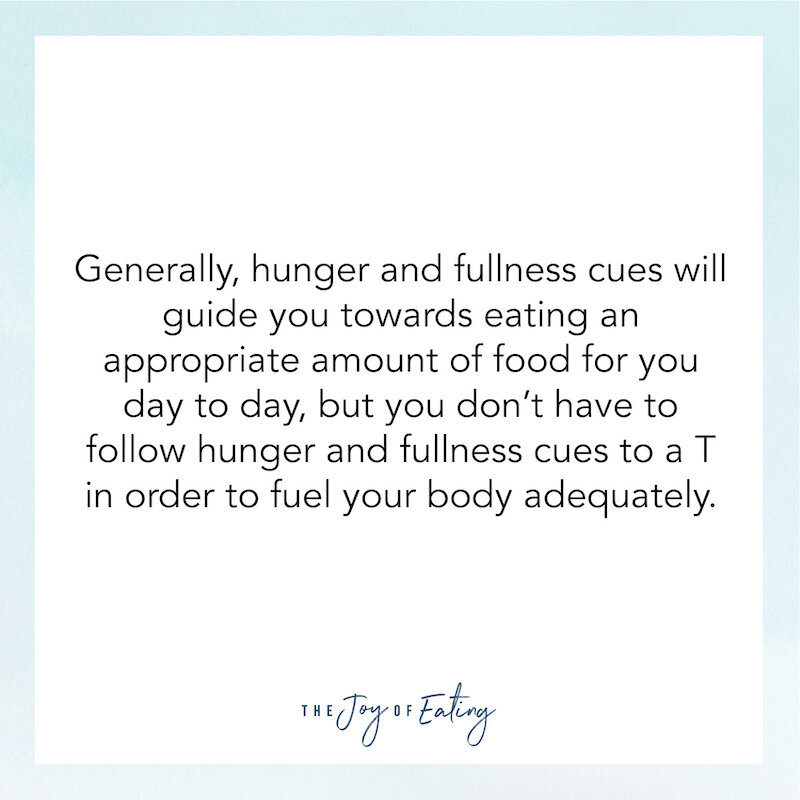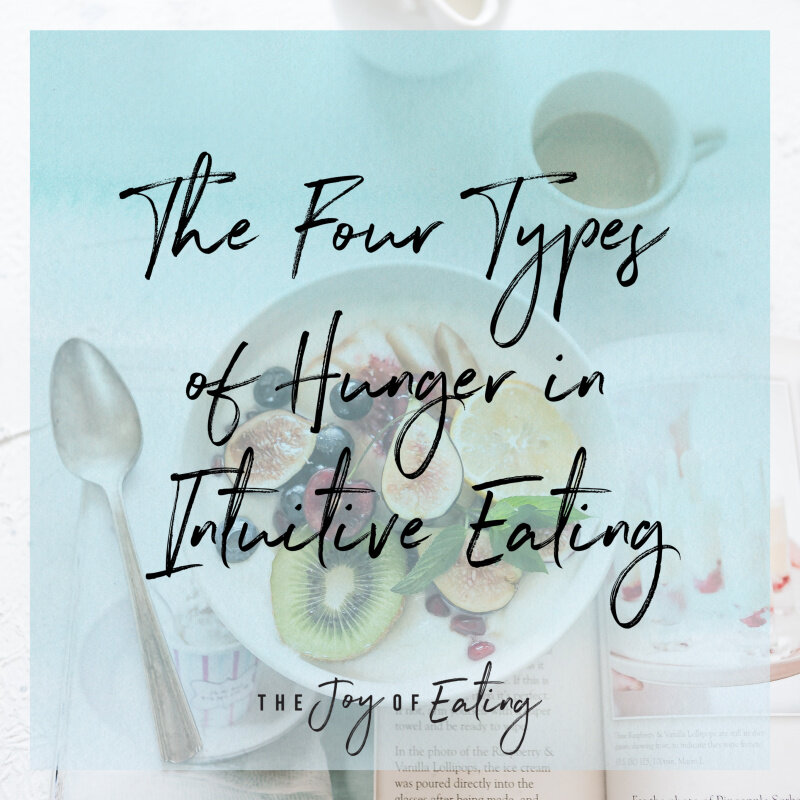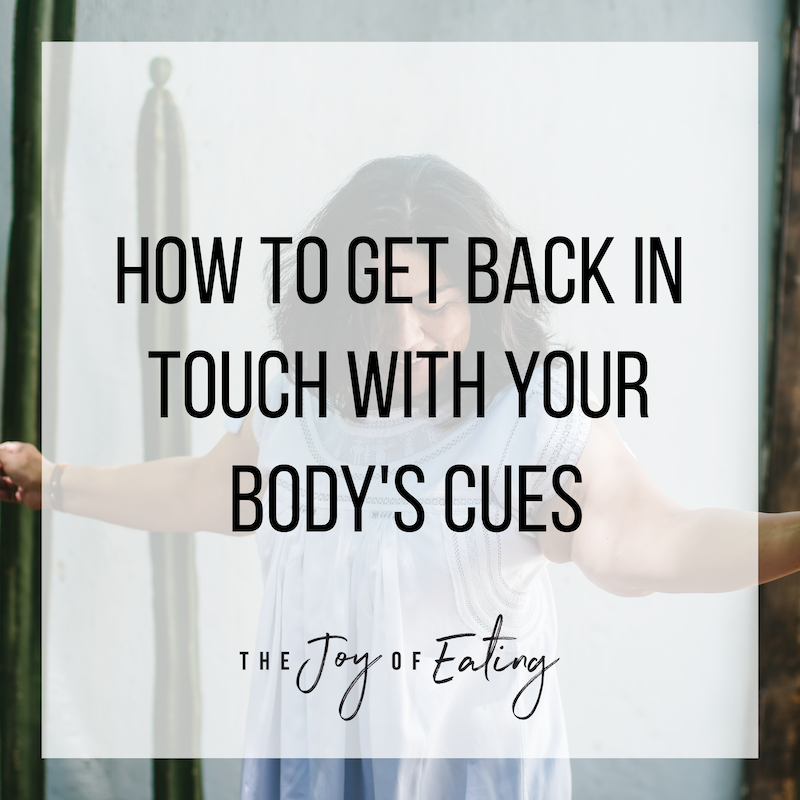Practical Hunger in Intuitive Eating: Why It's OK to Eat When You're Not Hungry
Intuitive eating teaches you how to eat when you’re hungry and stop when satisfied, but it’s much more nuanced than that! Learn why it’s OK to eat when you’re not hungry in this post on the role of practical hunger in intuitive eating.
This post on practical hunger in intuitive eating was originally published April 2018. It has been updated to give you the best possible content. If you are reading this the day it’s being reposted (in April 2021) I’m not actually in Ohio, as the first line implies :) It’s just a good example I wanted to keep!
Hello from Ohio! Today’s post on practical hunger in intuitive eating is coming to you from Cleveland, where I’m visiting for a sponsored dietitians trip.
Getting here yesterday required a waaaaay too early wake up call at 4 AM to catch a flight from Columbia to Atlanta and then to Cleveland. The 4 AM wake up was made worse by the fact that I stayed up a bit too late packing and finishing up a last minute project. I got to the airport around 5, immediately boarded, and konked out for the hour flight to Atlanta.
When I arrived in Atlanta, I didn’t feel hungry. Usually it takes about an hour after waking up for me to work up an appetite. Waking up so early then falling back asleep, my body was totally off, and the idea of eating felt pretty unappealing.
Despite my lack of hunger, I knew it would eventually kick in, very likely in the middle of my 2 hour flight to Ohio. Since a mini-bag of 10 peanuts isn’t exactly the breakfast of champions, I knew I needed to eat something, despite my belly telling me it wasn’t time yet. I also knew once in Cleveland, I would be meeting up with other dietitians and carpooling to the hotel, and I didn’t know what the time or food situation in Ohio would be. So, I grabbed a coffee and an overpriced sweet potato biscuit with maple turkey sausage, egg and cheese, and ate it. Because I wasn’t hungry, food felt pretty unappealing…but so was the idea of being stuck in the air with a gnawing empty stomach.
What is Practical Hunger in Intuitive Eating?
This is an example of what I like to call honoring your practical hunger, one of the four types of hunger in intuitive eating. Practical hunger is when you’re not hungry in the moment, but need to eat in response to anticipated physical hunger that you may not be able to satisfy because food may not be available. It’s the eating equivalent of making yourself go to the bathroom before hopping in the car for a long road trip.
Here’s a few more examples of times you might want to honor practical hunger in intuitive eating:
You’re going into a situation where you may not have access to food for more than 3 hours (i.e. a plane flight, meetings, classes/seminar, etc).
You have to take a medication with food.
You’re about to do a strenuous workout and know that your body needs fuel.
You’re in eating disorder/disordered eating recovery and following a meal plan/meal schedule.
You have IBS or another GI condition that makes it hard to feel hunger, and know that going too long without eating upsets your stomach.
Why It’s OK to Eat When You’re Not Hungry
Honor your hunger is one of the first principles of intuitive eating, but sometimes people translate it as only eat when you’re hungry. It’s so easy to bring the diet mentality into intuitive eating and turn guidelines into rules! And it sure doesn’t help that there’s lots of people out there co-opting intuitive eating language and principles for the purpose of selling intentional weight loss. Or just as annoying, explaining intuitive eating in simplified ways that define it as eating when you’re hungry and stopping when you’re full.
It is totally OK to eat when you’re not hungry! Not only that, but often it’s a smart choice, because most of us don’t have free access to food 100% of the time. We have lives that don’t revolve around food, which means we can’t always stop as soon as hunger hits. To not honor practical hunger means you’ll likely feel uncomfortably hungry at a time you can’t feed yourself, which impacts mood, energy and digestion. Also, it’s likely to lead to later eating experiences that feel impulsive or out of control.
Some people worry that if they’re eating outside of hunger, that means they’re eating “too much.” First of all, it’s important to recognize that is diet mentality and fear of fatness is fueling this anxiety. If that wasn’t present, a.) you probably wouldn’t eat outside of hunger all that often but more importantly b.) when you did it wouldn’t be that big of a deal. Generally, hunger and fullness cues will guide you towards eating an appropriate amount of food for you day to day, but you don’t have to follow hunger and fullness cues to a T in order to fuel your body adequately. Honoring practical hunger might mean there are occasional days you end up eating more food than typical, or more food that your body “needs.” It’s OK! I promise your body knows what to do with that energy.
How to Honor Practical Hunger in Intuitive Eating
Generally speaking, if you know you’re going to get access to food again in 1-3ish hours, it’s probably smart to have a satisfying snack that contains at least a couple different foods. Eating a couple foods together means you’re likely to get a satisfying combo of fat, carbs and protein. Here’s some examples:
A handful of almonds with dried fruit and chocolate chips
An energy bar (I especially love Lara, Clif, KIND, and Perfect bars) - typically these contain all the macronutrients in one food.
Cheese and crackers, or one of those adult lunchables with fancy cheese and salami
Fresh fruit with almond butter
Yogurt with granola
If you think it’ll be more like 2-3+ hours before you get food again, you might want to eat a mini-meal, or just a regular ‘ole meal. Since you’re not hungry, you might want to focus on something that provides all your macronutrients in a smaller volume. And of course convenience! Here’s some examples:
A sandwich
Pizza
Frozen burrito (something we almost always have on hand!)
A snack plate, which could include a combination of foods like crackers, cheese, fresh fruit, raw veggies, hummus, pretzels, nuts, yogurt, olives, smoked salmon, deli meat, avocado, etc
A bowl of chili (big fan of Amy’s brand)
A frozen meal
In these cases, the primary goal in eating is just fueling your body. Other times, pleasure might be a higher priority, but in these situations, you may be thinking more about eating in a practical matter - what’s going to stave off hunger, keep my blood sugar steady, and what’s available. Not every meal has to be a gourmet eating experience, and that's okay!
As with anything with intuitive eating, it’s important to remember everything you learn is a guideline, not a hard and fast rule, so please don’t take these loose guidelines that way. But I hope it gives you some flexible structure next time you need to eat when you’re not hungry.
If you like this blog post on practical hunger in intuitive eating, follow my intuitive eating Pinterest board for more inspiration and support.







